FujiFilm X-Pro1 review
Wednesday, September 12th, 2012 at 11:01
One day in August I was disappointed to miss some photo opportunities. My idea was that a good system camera would fit my needs. But: buying into a certain system is expensive. I decided to review a few system cameras to find out which one would be the best for me. The X-Pro 1 is the first camera up for review.
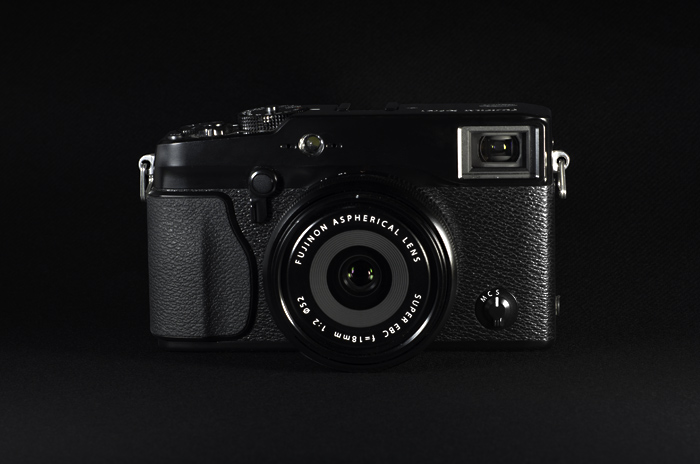
Photo: my studio shot of the FujiFilm X-pro 1 with 18mm F2 wide angle lens
What is the X-Pro 1? It’s a digital system camera in the pro segment. System camera meaning that it has it’s own set of exchangeable lenses within a system (in this case, the FujiFilm X system); pro segment meaning it has the features a pro would expect.
Pricing, available lenses
First and foremost, this is an expensive camera: the body is €1599, each lens is about €5801. I got a kit with three lenses from FujiFilm, which I tried for 1 week. The kit included a 60mm F2.4 macro lens, an 18mm F2 lens and a 35mm F1.4 lens.
These three lenses are the only ones available at this point. FujiFilm has a lens roadmap of lenses coming in the near future. New bodies will also be released in the “X” system (in fact, the X-Pro1’s little brother — the X-E1 — will be shown at Photokina)
This roadmap looks promising. Some years down the line — with new bodies out — you’re still going to want to be using your old lenses.
For people with an existing lens collection, there are also some converters around to use other lenses on the X-Pro 1. For example, Leica Summicron lenses can be attached using a converter. You will probably lose some essential features — like autofocus — so it’s not for everyone.

Photo: The DOF is pretty amazing (35mm F1.4).
Base specs
Some base specs: this camera has an APS-C sensor with 16 MP. ISO goes up to 25600, the continuous mode up to 6 fps. It has a hybrid viewfinder (more on that later in this review). On the back is an LCD screen and more controls. It takes SD cards for storage, that’s a plus for me.
For extensive specs, head over to the in-depth review at DPReview. This review will mostly focus on my own experience with this camera.
Size, build and handling
The X-Pro 1 is a lot larger than your typical compact camera but a lot smaller than a (small) DSLR. It’s comfortable to walk around with all day, although how comfortable depends on the lens. The wide angle 18mm is very lightweight and the easiest to carry around. The 35mm is a bit heavier and is harder to tuck away.
This camera has a magnesium alloy build and feels very sturdy. Shooting with it is truly a nice experience. Many controls are all tied to mechanical switches and dials, that all feel like they are built to last. It’s a piece of fine craftsmanship. The engineers at FujiFilm truly made something very special here.
There are hardware controls for most things you need: shutter speed, switching focus modes, exposure compensation and AE/AF lock. You control aperture by turning the lenses’ aperture dial. This works well and feels natural.
Notably lacking is a hardware button for switching the ISO. There is an “FN” button that you can hook the ISO setting menu up to. This lightens the pain a bit, but you still have to deal with software menus when switching. The fact that the auto ISO setting won’t allow you to set a minimum shutter speed doesn’t help.
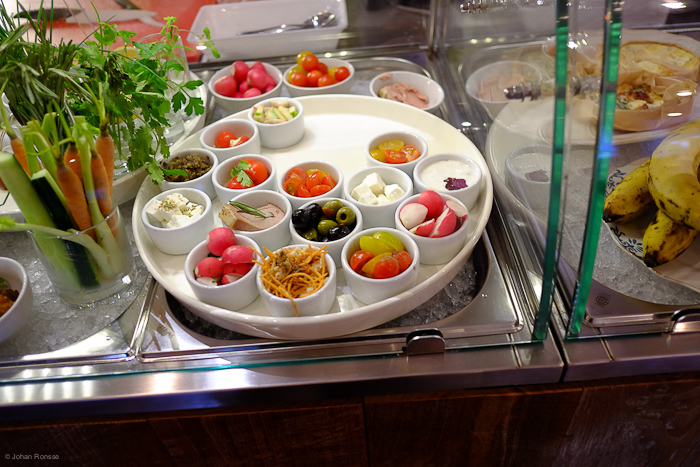
Photo: ISO1600 inside still gives you a decent and relatively noise-free image. Higher than that yields a lot of noisy pictures – it goes up to 25600 but I would never use that setting.
Some essential parts to photography, like switching metering modes and changing ISO, require a dive into a software menu. I understand FujiFilm had to make a choice here; given the limited size of the device, you can’t have a physical knob or dial for everything. Still, I feel like the implementation is lacking.
One of my biggest problems in usage was not being able to choose a focus point in a fast way. There is a menu for this, that is also accessible when your eyes are glued to the viewfinder (the menu appears in the electronic viewfinder), but you have to awkwardly-located AF button to bring it up. It would be better if you could always control the focus
points with the arrow pad.
To fix the pain of typical menus FujiFilm invented a “Q” menu which allows quicker access to your settings. This displays a 4×4 grid of settings which you can quickly change using a dial on the back. It works reasonably well, in fact it’s a very good implementation, but I really don’t want to go into menus for switching metering modes or ISO.
Battery life is subpar, you’ll have to remember to charge a lot or bring multiple batteries. I haven’t been able to test this extensively so don’t take my word for it.
Software slowness
The biggest issue with the X-Pro1 is the firmware.
You know how with a DSLR you can take a shot, and then take another one, and the camera will always be ready for you? The X-Pro1 isn’t nearly as reliable.
When you take a picture, it seems like the camera is stuck for 1,5-3 seconds to process the file (when set to RAW). Sometimes when you turn the camera on it doesn’t do anything and you have to wait until you are able to shoot, sometimes up to 10 seconds. This is frustrating, especially if you just wanted to take a specific picture (e.g. of a classic car passing by).
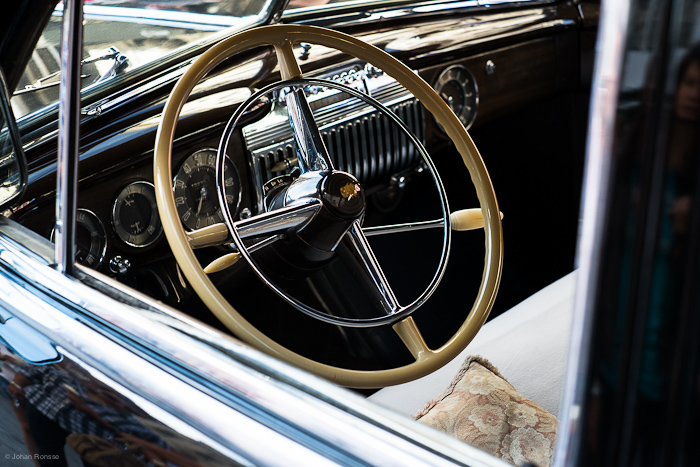
If you start shooting RAWs in continuous mode, the camera will take a lot of time to write the data, rendering it unable to be used for quite some time. If you are going to be shooting any sports type things, you’re better off switching to JPG. The time between shots is reasonable enough then to capture the action.
When you review a sequence, a little animation of the shots you made plays. This can deliver some neat results. It’s kind of like a live animated GIF.
Note that the X-Pro1 RAW files (.RAF extension) are not recognized by Lightroom 4, this requires an upgrade to Lightroom 4.1.
My impression is that the RAW files don’t contain nearly as much data as the Nikon RAW files I’m used to. Exposure recovery in skies etc. was harder to do. The default color settings also look washed out. A quick research finds that the internet comments negatively on the X-Pro1 RAW files. RAW support is new and likely to improve in the future, but this doesn’t help a photographer today.
(Note: Photokina 2012 is almost here and FujiFilm seems to have listened to the community. Some of the negative points mentioned in this review seem to have been fixed with firmware 2.0. I got to test the X-Pro 1 for 1 week with older firmware so I can’t comment on this, but this is likely to be a huge change)
View modes
The X-Pro 1 hybrid viewfinder deserves it’s own section since it’s a unique feature. First of all, the fact that there is a viewfinder is what sets it apart from a compact camera.
You can use the LCD screen to make a shot like you would do with a compact camera, but what what you’ll probably use most is the “hybrid” viewfinder. Why is it hybrid? Well, there are two modes to the viewfinder (digital and optical).
In digital mode you see a digital image of the scene, with simulated exposure so you know to darken/brighten your picture using the controls. You’ll also see whether your
subject is in focus or not. The drawback here is that the image of the digital mode is a bit slow to catch up with reality. If you’re using a longer lens (e.g. the 60mm) the image can get shaky even if you’re holding your hands reasonably still.
The digital mode has all kinds of neat features: it can show a live histogram and some kind of horizon meter that shows a line if you’re not shooting straight.
The other “optical” mode gives you the real image behind the viewfinder, similar to looking through the viewfinder of an analog camera. Some data is cleverly overlaid on this mode including the frame that the picture is going to be and the necessary data (ISO/Aperture/Shutter speed).
One issue is that what you see through the optical viewfinder is not always what you get. It can be bit frustratng if you carefully frame a shot and the result is not what you saw in the viewfinder. The issue gets worse with longer lensens. I’m not really sure what causes it.
Despite its flaws, the optical viewfinder is probably one of the best features of the X-Pro 1. Looking through an optical viewfinder to compose your shot is a much more enjoyable experience than using a digital viewfinder.
The Macro lens
In the current lens lineup there is a 60mm lens with macro capabilities. The lens offers 0.5x magnification at its closest focussing distance.
There is a separate macro setting to this camera. In Macro mode you are forced to use the digital viewfinder. This makes sense because depth of fields get extremely important and there is no DOF preview when using the optical viewfinder, but having modes does make for a lot of “oops, left the camera in macro mode”-moments.
I tested the macro capabilities in a semi-darkened room using ISO 1600 auto and it was an exercise in frustration. The macro lens requires multiple turns to change focus. The digital viewfinder is slow to update. Maybe it’s me, but I couldn’t get much decent macro shots out of the camera (this was without a tripod).
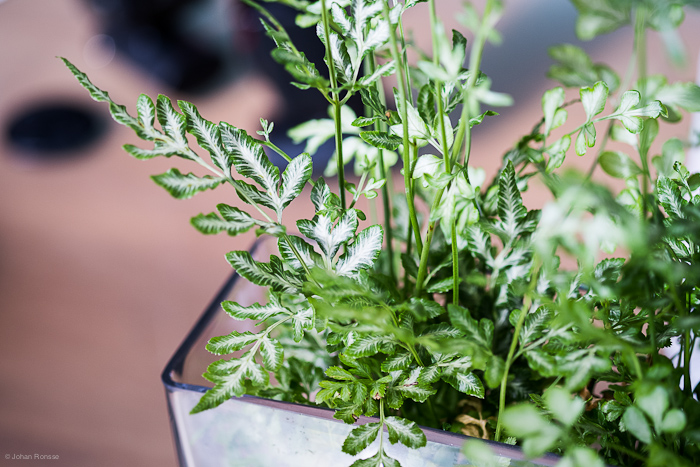
Photo: This one was shot with the macro lens. The auto focus is slow, and the manual focus it not very responsive. This makes it pretty hard to do good macro pictures under less than ideal circumstances.
Further pictures and discussion
I will edit almost every picture I take so I will also rate a camera on the edited images, not the straight out of camera images. These pictures are mostly edited for colour and contrast.

A portrait of me. Had to include a people shot in this review ;)
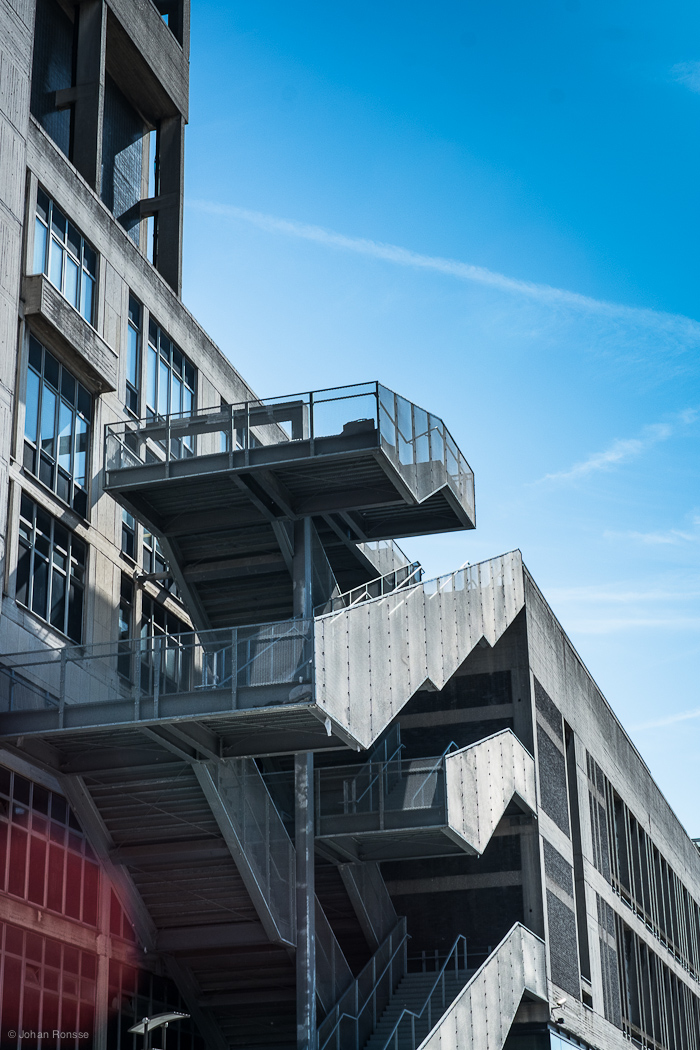
Photo: Architectural snap.
You are much more likely to get great snapshots because, well, you have the camera with you. It does weird things when pointed into the sun though (see the red flare in the bottom corner)
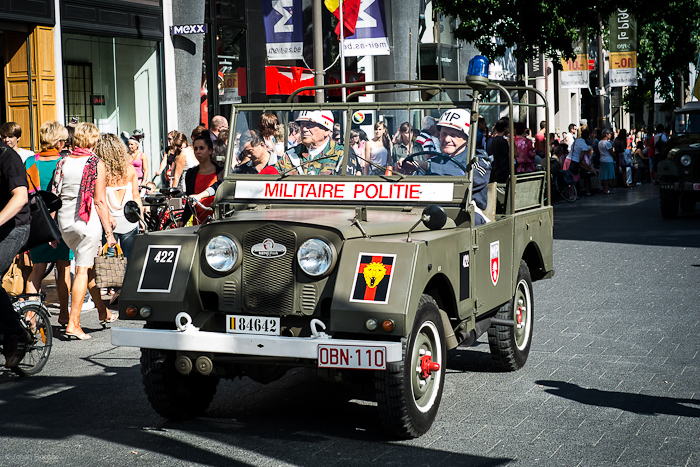
We came across this military parade. This car was moving slow, 1/400, F6.4 (interestingly you can control aperture at 1/3 stop intervals)
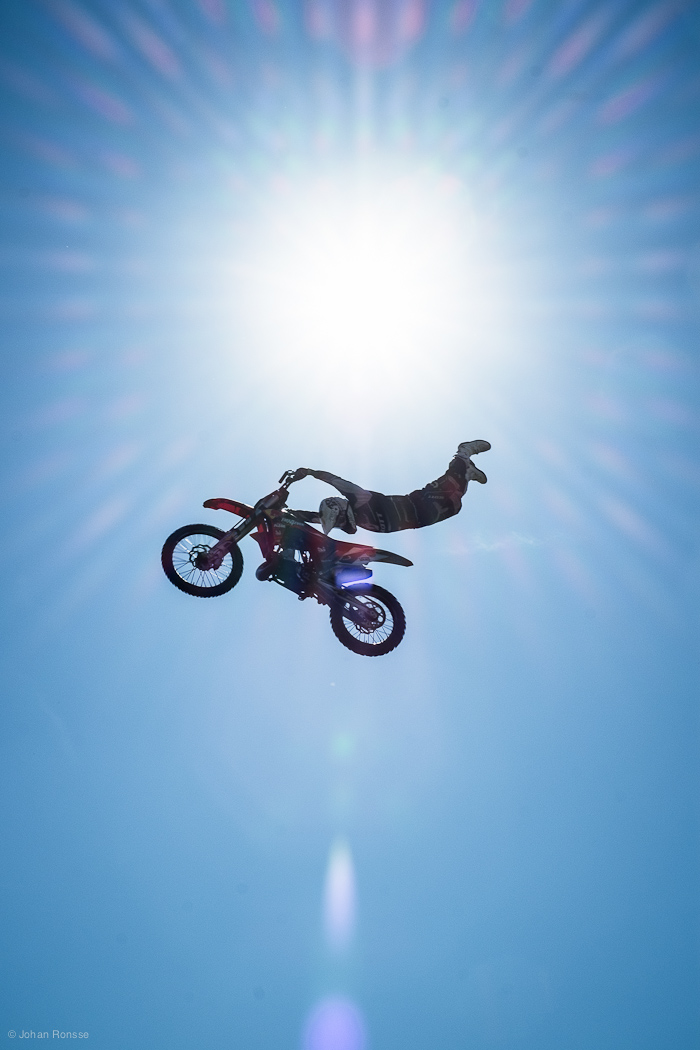
My lucky shot of the week.
In continuous mode this camera can shoot up to 6 frames per second to capture that perfect one. The maximum aperture of the 35mm lens is F/16 so it’s harder to block big lights like the sun than with a typical DSLR. Do note the rather odd blue “spot” on the cyclist.

The 18mm lens offers a wider view.
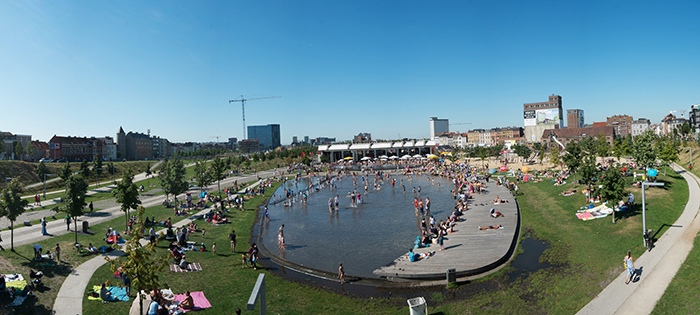
If you want to go even wider there’s a panorama function, I did this one by merging separate pictures in Photoshop, I didn’t get the chance to try the actual panorama function.
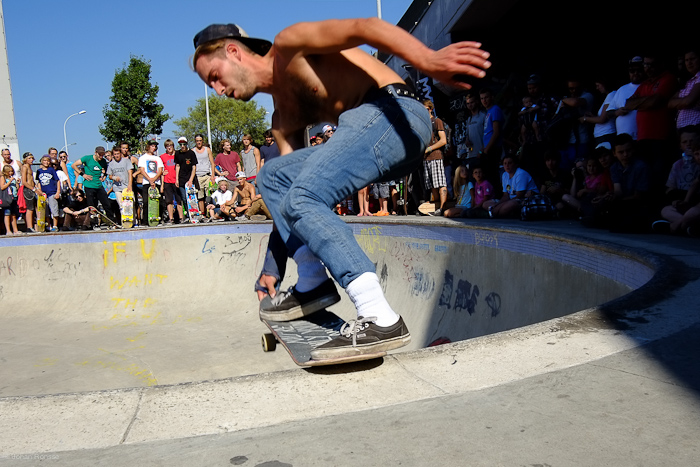
Here’s another one with the wide lens. Unfortunately the skater’s face is slightly out of focus. The camera is often too slow to focus, but this action was so fast that I’m not blaming the camera here :).
Conclusion
With it’s decidedly cool retro look, a nice set of primes, and good portability, this is an excellent camera.
There are definitely downsides to this camera, and you’ll curse at it multiple times for missing that shot. The slowness of the software and poor focus point selection controls will frustrate you. I’m very curious about the 2.0 firmware update.
It’s definitely capable of DSLR quality shots, but for mission critical operations I would still take that DSLR. One thing that sets it apart from a DSLR is that you can always have it with you. A big plus is that it’s a lot more inconspicuous. It seems ideal for assignment photography or travel stories. Something about long lenses on DSLRs seems to make people uncomfortable.
- Prices may vary, for this review I checked the current ones at digicamshop.be
1 comment
On the discrepancy of viewfinder vs result, this is called (vertical/horizontal) parallax, and is quite typical for viewfinder type cameras due to the viewfinder not being in line with the focal point. This one has both vertical and horizontal parallax. Some cameras position the viewfinder directly above the lens, then you only have to account for vertical parallax.
http://en.wikipedia.org/wiki/Parallax#Parallax_error_in_photography